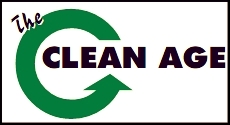Have you ever considered the outcome of your defunct or obsolete computers, televisions, DVD players, refrigerators, etc? Many of us throw them in the general waste bin or council collection and never think about it again. This type of waste poses substantial problems for people and the environment if it’s not managed well.
E-waste is the terminology applied to discarded electrical and electronic equipment. It is one of the fastest growing type of waste. This can range from kitchen appliances, such as microwaves and dishwashers, to electronic devices like laptops, batteries and mobile phones. Fifty percent of today’s e-waste is computer and computer peripherals, most from commercial sectors. Every time you upgrade your smart phone or fridge, you’re creating e-waste.
E-waste that ends up in landfill causes significant environmental damage. Depending on the discarded article, e-waste can leak toxic substances into the surrounding areas. These substances are likely to be lead, arsenic, cadmium, selenium, antimony trioxide (flame retardant), cobalt and mercury. As the garbage decomposes, it mixes with these harmful substances and leaches into the ground, contaminating the soil and groundwater, which is likely to then enter the food-chain.
Like most other developed nations, Australia exports large amounts of its e-waste overseas. This e-waste is shipped to developing nations for their government to oversee, hopefully, its recycling or otherwise its disposal. There is a requirement, under the Basel Convention, that all hazardous and toxic waste is only sent to a regulated disposal source. Therefore, Australia has an obligation to ensure the waste recipient countries are safely and responsibly managing the e-waste exported from our country.
Currently Asia and India are the major recipients of the e-waste from developed nations. Not all of these countries are able to cope with the magnitude of e-waste being imported. This means there are recycling corners cut and disposal plans not followed. India has slums that exist atop their many garbage dumps. Families exist amongst rubbish contaminated by partially processed e-waste, whereby contamination by heavy metals causes significant long-term health problems for them.
Then we have e-waste smugglers to consider. Many containers of e-waste exiting Australia have been intercepted by authorities. To my knowledge there has not been any prosecutions. I understand that Australian Customs does not keep records of any of the cases referred to the Department of Environment for investigation. I could imagine it would be difficult to establish the exact number of containers leaving Australian shores, without regulatory oversight, in the absence of records such as these.
Signing the Basel Convention in 1992 committed Australia “to observe the fundamental principles of environmentally sound waste management” [Basel Convention Article 4] when exporting all e-waste. Australia is also further subject to the Waigani Convention involving waste movement within Pacific Islands. Australia has been found to have breached the Basel Convention on numerous occasions.
Recycle all your defunct electronics rather than holding them in your home accumulating dust. Ensure you send them to reputable recyclers such as Planet Ark or contact the longstanding organisation, 1800ewaste. If you feel like you don’t have enough e-waste to warrant a pick up by a recycling depot, it’s time to join forces with your neighbours. Contact your local environmental not-for-profit for assistance if you still haven’t got an ample pile.
Whatever you do, don’t throw your e-waste into the general waste.
References:
http://www.ewaste.com.au/recycling-electronic-waste/
http://www.basel.int/TheConvention/Overview/tabid/1271/Default.aspx
